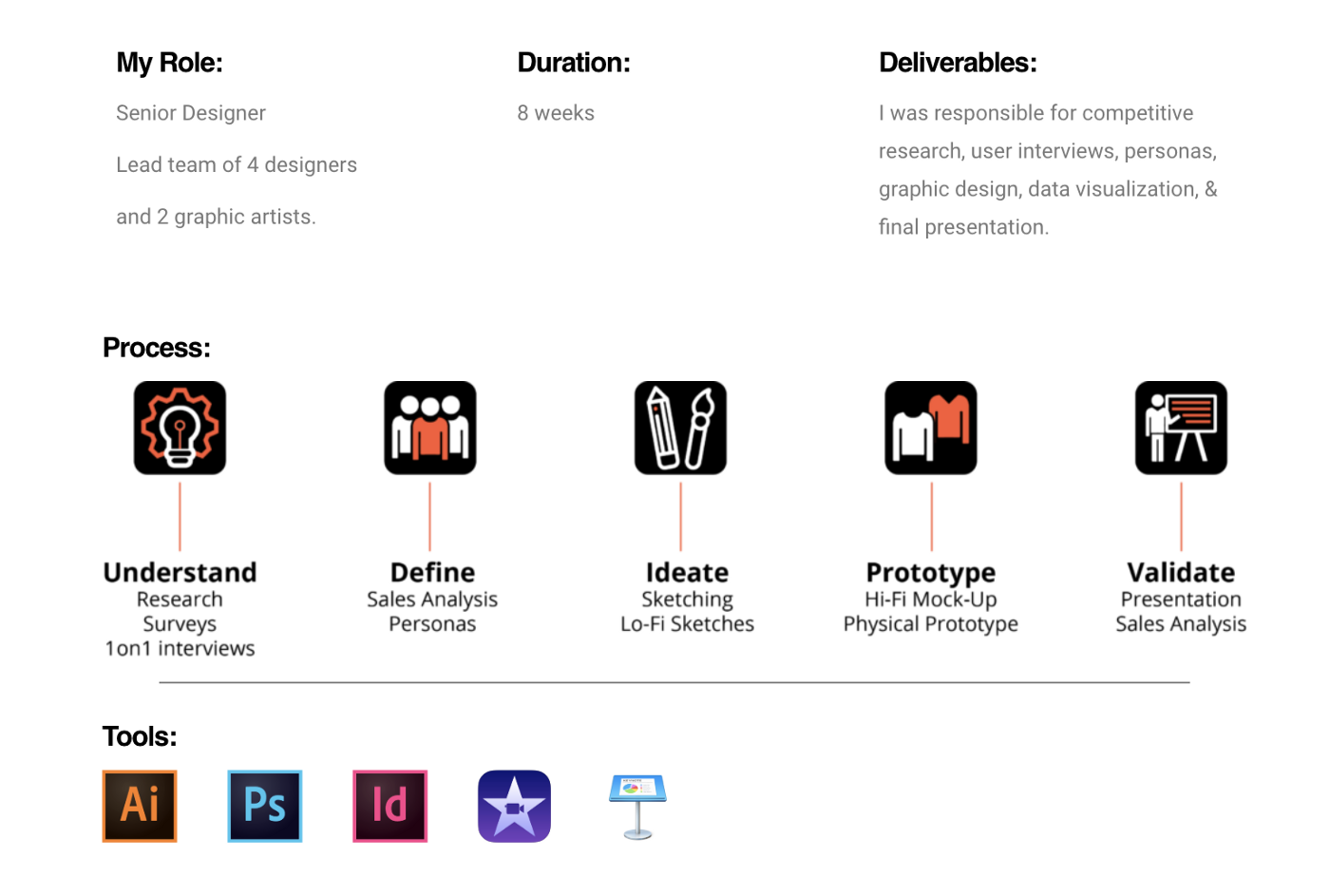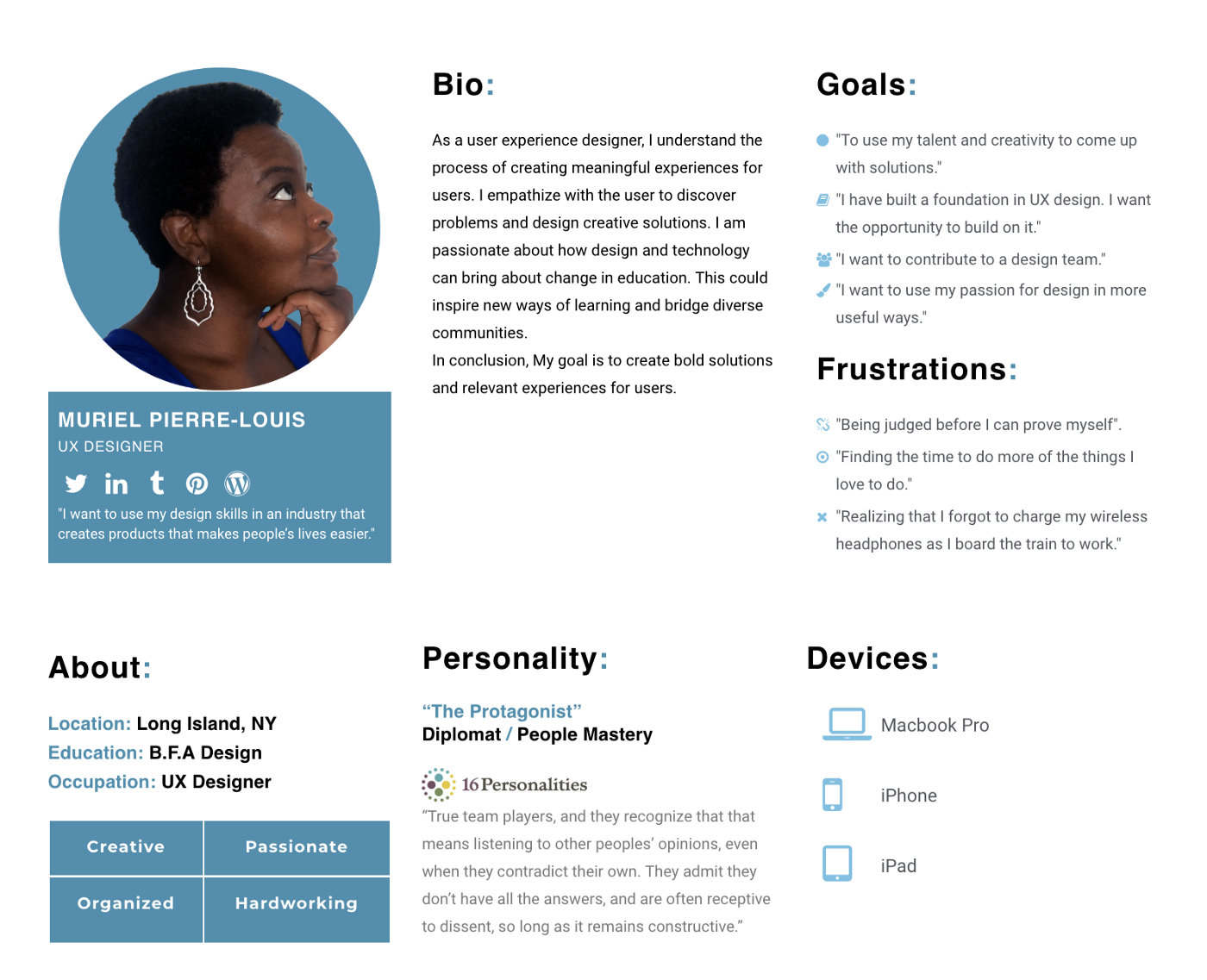Today we want to share our thoughts on what is needed to create a good UX designer portfolio.
Imagine that you need a portfolio to receive an order for UI / UX work. If you are just starting to work in this area or have taken a sufficiently long break in your work, then this can be a real shock. Even if you have a portfolio, it may be interesting to see if it will do everything possible from what it can. In this regard, we have some thoughts on the topic of design portfolio - how to make it holistic and make the most of it.
Search for inspiration
So where do you start? How many projects should be in the portfolio? What is the best way to organize it? There are many great resources available if you need help getting started or need inspiration.
“How to start?” And other examples
If you google “UX Portfolios”, then you will get so many results that you can’t even read them all your life. Therefore, we decided to save a little time and share our favorite examples:
- We believe that it is always useful to know the opinions of recruiters and hiring managers, because often they are your main users. An article by designer Tobias van Schneider, “How to Build a UX Design Portfolio: Tips from a UX Senior Recruiter,” talks about what these recruiters are specifically looking for and how to use it in their portfolio.
- The article “10 Inspirational UX Portfolios and Why They Work” has gathered examples of great portfolios and explains why they do their job. So, using the material from this blog, you can also make an excellent portfolio. Such blogs make ideas and inspiration “open up”, especially if you don’t want to have a cookie-cutter site or you had to slow down, trying to move forward in your work.
- All designers always want to create something unique. The article “How to make your portfolio special” offers excellent tips on how to make your portfolio different from the portfolio of other designers.
Templates and hosting
More template
poets , good and different. Many services offer both paid and free templates. Whatever website designer you choose, any of them will offer a wide range of diverse templates. In particular, I want to pay attention to
WordPress ,
Wix ,
Dribbble ,
Behance ,
Coroflot . These tools allow you to get rid of many inconveniences when planning layout, coding and managing a site with a portfolio. For example, the
Dribbble Playbook takes your profile on Dribbble, “removes the Dribbble label from it, leaving you with an optimized website that is immediately available for use ...”.
If desired, you can assign your own URL to the web page. Buying your own domain name always has some advantages, as it will be easy for you to remind when communicating with a recruiter how easy it is to find you again. If you want to do something else and at the same time you have the skills or the desire to get a little technical knowledge, then Semplice is a great option.
 Semplice.com
Semplice.comAll this is about your process.
Most experts and bloggers recommend using a case study in their portfolio. It will always let the reader know the context of your work and will allow potential employers to know exactly how you solve problems. Everyone has sticker notes on the wall or board. You must explain why they were there and what they were about. This serves as a reminder to the future of you about how you approached something, or about the new approach that you tried and the concept of whether it worked or didn't work. General advice will tell you how to set up the formula, including a resume, a description of the problem being solved, a list of steps that have been completed, and the final result.
For example,
Muriel Pierre-Louis does a good job of his case studies. Throughout her portfolio, she builds history. On her homepage, she talks about each project. If you suddenly want to know more, each part has a continuation with a more in-depth amount of information about the project. Her case study begins with a review, including a mini version of her formula: Summary, role, how long it took, what the final product was, a list of tools used, and a timeline for the entire work process. Then Pierre-Louis expands every major part of his formula. This works because it gives the eternally rushing customers enough information so that they can view all of her projects, but at the same time gives HR managers a clearer, deeper understanding of her skills, as well as the motivation that drives her.

To really stand out from the crowd, your case studies must have conclusions, not just a story. Think about all the difficult questions that you hate to answer at the interview, and see if you can answer them with your work:
- What problems have you encountered?
- What did you do differently?
- What exactly did you try, what didn't work?
- What did you learn?
- What did you do?
Managers love specific numbers that prove the value of the work, especially in the creative field, which is difficult to quantify. Some designers set a metric, show their decision, and then show a specific result.
The following are examples from case studies of the UX design team
Ramotion Translation: By the time Tile contacted us, only 29% of users had successfully completed the activation process.
Translation: By the time Tile contacted us, only 29% of users had successfully completed the activation process. Translation: Thanks to the new activation interface, the number of completed sessions has increased to 60%.
Translation: Thanks to the new activation interface, the number of completed sessions has increased to 60%.Make it personal
Remember that this is your story. What could be better to illustrate your storytelling ability, if not portfolio? Think again about these awkward questions in the interview: “So, tell us a little about yourself.” If you take some time to answer this question in your portfolio, it will help you prepare for this question and give visitors of your portfolio some idea of who you are and how you ended up where you are now.
Tell your visitors what drives you, what you are passionate about. This will give them something to ask more about them, and make them want to contact you.

Homepage
murielplouis.comAdd some personal information that complements the background information and details the story. For example, in the form of an infographic resume or something more personal - depending on what you want to share with your audience.

About Me Section
Muriel Pierre-LouisLearn something new
Beginners in the field of UX design are not the only ones who may need different types of objects for their portfolio. Experts cannot agree on what the “magic number of projects” should be like. Some argue that one is enough, while others speak of
three or five. And according to one blogger, there are
"7 projects that you should include in your first UX portfolio .
" Although it is certainly great to specialize in a specific field of knowledge and keep only projects in this field in the portfolio, however, it can often be useful to include one or two projects from another field that demonstrate your flexibility or interest in learning.
Some of us sometimes need to be encouraged to finally download the very free trial version or go in a new direction. Using your portfolio as one of the components can give motivation for research and in fact give you something new.
Promotion
Do not let the very beautiful new site you create languish in cyberspace. We already wrote above that there are sites such as Dribbble and Behance that are great places to host your work, but in addition, they can also help you promote your work. In the
“Best ways to get your work noticed on Behance” from CreativeBloq you will find some useful tips on how to create a healthy informational noise for your work, as well as notice it and the Bēhance administration will add its supervised sections, which will allow a larger audience to see these are wonderful works.
When creating a portfolio, you should not limit yourself to just a static website. Go to social networks and talk about your work, about who you admire, and about new ideas that you saw. The more active you are in social networks, the more communication, promotion and attention you receive in turn in return. Be sure to include a link to the main portfolio. Social networks like LinkedIn, Instagram and Twitter are a good place to start. As confirmation of this Twitter account Luke Wroblewski. Here is a brief summary related to his professional interests, a link to his personal website and retweets of interesting content from relevant articles and events.

image from
twitter.com/lukewUpdate your portfolio
Now that you have the perfect portfolio, develop the habit of keeping it updated. You never know when the moment will be given to show it in all its glory.
After making sure that the portfolio is up to date, you can use all its advantages when it suddenly becomes necessary.
Try to document absolutely everything that you do. Take photos of your notes, scan your low-resolution layouts and get permission from the customer to use the project in your portfolio.
Plan your time (once or twice a year) to think about what you have achieved and add the best projects to your portfolio. Not only will the portfolio be ready when you meet with the hiring manager at a large event, but you will also get an idea of your creative process, remember what you were passionate about, and maybe find something new that you want to explore or try in next time.
Spending time creating an excellent portfolio, you not only increase the chance to get a good job, but you can also focus and continue your career as a UX designer.
We hope that this article was useful to you!